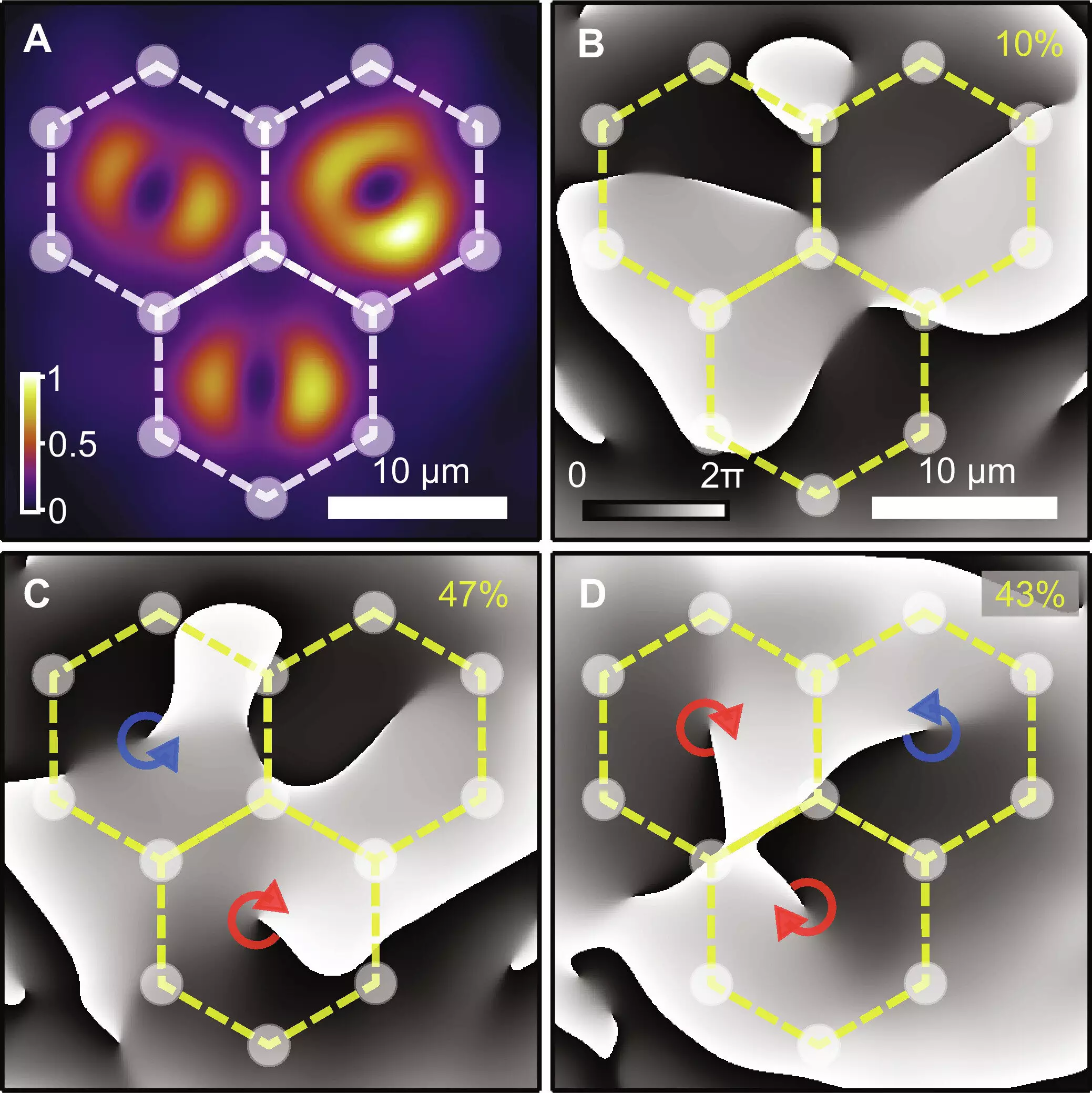Recent research conducted by a team of scientists from Skoltech, Universitat Politècnica de València, Institute of Spectroscopy of RAS, University of Warsaw, and University of Iceland has led to groundbreaking findings in the field of quantum vortices in optically excited semiconductor microcavities. The study, published in Science Advances, highlights the spontaneous formation and synchronization of multiple quantum vortices in these microcavities, revealing an intriguing behavior of antiferromagnetic coupling among the vortices.
By utilizing optically structured artificial lattices composed of coupled polariton vortices, the researchers have opened up new possibilities for studying and simulating condensed matter systems. These lattices serve as a unique platform where spin angular momentum is replaced by the orbital angular momentum of the polariton condensate. While the dynamics of quantum vortices in exciton-polariton systems have been explored previously, the formation of extended two-dimensional lattices of phase-locked quantum vortices had not been achieved until now.
The experiments were conducted at Skoltech, specifically in the Photonics Center’s Hybrid Photonics Laboratory, under the leadership of Professor Pavlos Lagoudakis. The researchers utilized a semiconductor planar microcavity, consisting of highly reflective mirrors with InGaAs quantum wells in between. This setup, operating in the strong-light matter coupling regime, leads to the formation of exciton-polaritons, which are coupled states of excitons and confined cavity photons.
Through optical excitation of the semiconductor microcavity sample with a patterned laser beam, the researchers were able to create a triangular lattice comprising 22 cells, each containing a polariton condensate carrying a single-charge vortex. Interestingly, it was observed that in neighboring cells of the lattice, the vortices exhibited an antiferromagnetic coupling, with opposite topological vortex charges. This behavior indicates a unique synchronization among the quantum vortices, leading to stable solutions within the lattice structure.
Theoretical analysis conducted by Dr. Helgi Sigurðsson from the University of Warsaw revealed the presence of extended antiferromagnetic order in the triangular lattice of vortices. By correlating the orbital angular momentum of each condensate with the low-energy configurations of the Ising spin Hamiltonian, the researchers were able to establish a significant connection between the observed behavior of the vortices and the principles of antiferromagnetic coupling.
The study on the formation and synchronization of quantum vortices in optically excited semiconductor microcavities represents a significant advancement in the field of condensed matter physics. The demonstration of antiferromagnetic coupling among polariton vortices opens up new avenues for exploring novel quantum phenomena and understanding the complex dynamics of coupled quantum systems. Further research in this area promises to shed light on the intricate interplay between quantum vortices and their interactions within structured artificial lattices.


Leave a Reply